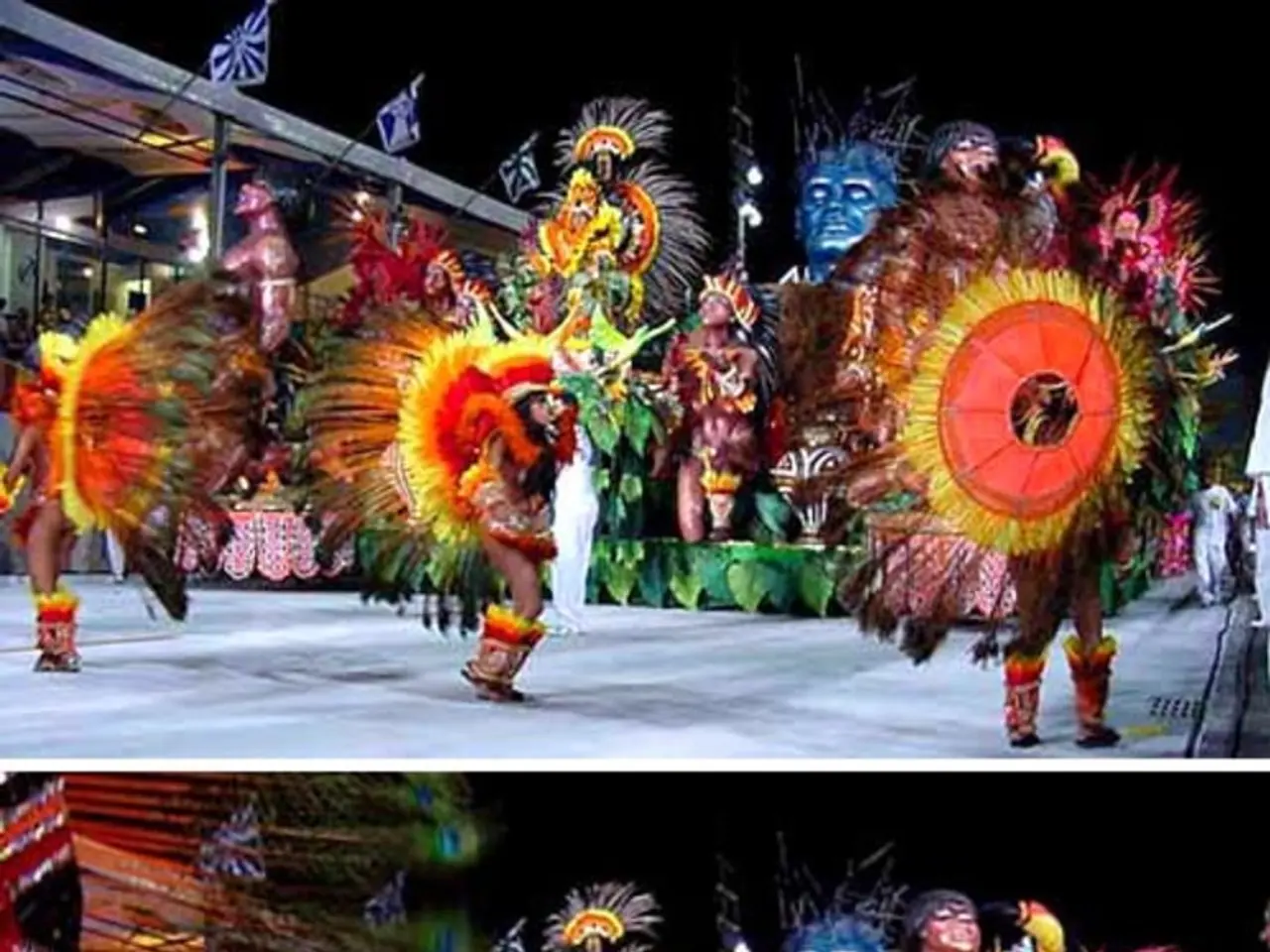Uncovering Lecce's Thriving Theater Scene and Cultural Hubs
Lecce, a city in Southern Italy, is a vibrant cultural hub that boasts a rich history and a thriving arts scene. One of its most notable attractions is the Teatro Paisiello, a testament to the city's longstanding cultural vibrancy[3].
Teatro Paisiello, Italy’s oldest theater, stands as a symbol of Lecce's cultural heritage. While specific details on recent performances or renovation milestones are not provided, its historic significance alone marks it as a primary theatrical landmark in Lecce[3].
Other significant cultural venues in Lecce include several renowned churches and historic sites known for their Baroque art and architecture, such as:
- The Basilica di Santa Croce, noted for its majestic Baroque facade and ornate interior carvings[5].
- Chiesa di Santa Chiara and Chiesa di San Matteo, other religious sites contributing to Lecce’s rich cultural heritage[4].
- The Museo di Arte Sacra (MuDAS) provides additional cultural context[4].
In addition to these landmarks, Lecce hosts various cultural events, including music festivals, theatrical performances, and art exhibitions[2][3].
Another important cultural venue is Officine Cantelmo, which supports local creativity and craftsmanship through events like the Mercatini delle Cantelmo, as well as promoting music and art with events such as Alpaca Fest and Dischi Parlanti[1]. The venue also fosters creativity and self-expression through projects like TELART.
Cantieri Teatrali Koreja, recognized by the Ministry of Cultural Heritage for its dedication to research and experimentation in contemporary theater, is another significant player in Lecce's arts scene[6]. Originally based in Aradeo, the theatre moved to Lecce in 1998 and transformed into Cantieri Teatrali Koreja.
The Teatro Politeama Greco is another significant cultural landmark in Southern Italy, second only to the Teatro San Carlo in Naples[7]. Established in 1884 as the "Teatro Principe di Napoli", the theatre has hosted prestigious operatic performances since its inaugural performance of Giuseppe Verdi's Aida and has attracted renowned artists such as soprano Erminia Giunti-Barbera, tenors Francesco De Santis and Tito Schipa, conductors like Pietro Mascagni, and singers like Katia Ricciarelli and Nicola Martinucci[8]. The theatre has undergone numerous renovations, including a transformation from a wooden structure to a stone edifice in 1913, and has been equipped with modern amenities like advanced stage technology and climate control[9].
Today, the Ex Convento dei Teatini serves as a vibrant cultural hub, hosting various events like temporary exhibitions, art shows, film screenings, and conferences[10]. The Ex Convento dei Teatini was originally built by the Teatini monks in the late 16th century and features Baroque architecture[11].
Lastly, the Teatro Apollo, one of Lecce's most iconic cultural landmarks, known for its neoclassical architecture and rich history, reopened in 2017 and is now a premier venue for cultural events, with beautiful interiors and superior acoustics that attract both local and international audiences[2].
In summary:
| Venue/Theater | Cultural Significance | Notable Details | |---------------------|---------------------------------------------|---------------------------------------| | Teatro Paisiello | Italy’s oldest theater, cultural landmark | Exterior notable; rich heritage; no detailed renovation/performance info available[3] | | Basilica di Santa Croce | Major Baroque architectural site | Ornate facade and interior carvings[5]| | Chiesa di Santa Chiara & Chiesa di San Matteo | Historic churches enhancing cultural fabric | Contribute to Baroque heritage[4] | | Museo di Arte Sacra (MuDAS) | Museum showcasing sacred art | Adds to cultural offerings[4] | | Officine Cantelmo | Supports local creativity and craftsmanship | Hosts events promoting local music and art[1] | | Teatro Politeama Greco | Significant cultural landmark in Southern Italy | Second only to Teatro San Carlo in Naples[7] | | Ex Convento dei Teatini | Vibrant cultural hub | Hosts various events like exhibitions and conferences[10] | | Teatro Apollo | Premier venue for cultural events | Beautiful interiors and superior acoustics[2] | | Cantieri Teatrali Koreja | Dedicated to research and experimentation in contemporary theater[6] | Originally based in Aradeo, moved to Lecce in 1998[6] |
For a deep dive into current programming or renovations, consulting local Lecce cultural authority websites or the Teatro Paisiello’s official communications would be necessary.
- Lecce, a city in Southern Italy, is renowned for its vibrant cultural scene and rich history, specifically its thriving arts scene.
- The Teatro Paisiello, Italy's oldest theater, is a symbol of Lecce's cultural heritage, with a notable Baroque facade.
- The Basilica di Santa Croce, a major Baroque architectural site, stands out with its majestic Baroque facade and ornate interior carvings.
- Other historical religious sites, including Chiesa di Santa Chiara and Chiesa di San Matteo, contribute to Lecce's Baroque heritage.
- The Museo di Arte Sacra (MuDAS) provides additional cultural context by showcasing sacred art.
- Officine Cantelmo supports local creativity, craftsmanship, and art, fostering self-expression and promoting music through events like Alpaca Fest and Dischi Parlanti.
- Cantieri Teatrali Koreja, a significant player in Lecce's arts scene, is recognized for its research and experimentation in contemporary theater.





